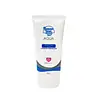What's inside
What's inside
 Key Ingredients
Key Ingredients

 Benefits
Benefits

 Concerns
Concerns

 Ingredients Side-by-side
Ingredients Side-by-side

Water
Skin ConditioningEthylhexyl Methoxycinnamate
UV AbsorberAlcohol Denat.
AntimicrobialButylene Glycol
HumectantIsononyl Isononanoate
EmollientMethylene Bis-Benzotriazolyl Tetramethylbutylphenol
UV FilterSodium Hyaluronate
HumectantHydrolyzed Collagen
EmollientArginine
MaskingLeather Coral Extract
Skin ConditioningVaccinium Myrtillus Fruit Extract
Skin ConditioningDiethylamino Hydroxybenzoyl Hexyl Benzoate
UV FilterGlycol Dimethacrylate Crosspolymer
Bis-Ethylhexyloxyphenol Methoxyphenyl Triazine
Skin ConditioningPolysilicone-13
PEG-40 Stearate
EmulsifyingBis-PEG-18 Methyl Ether Dimethyl Silane
EmollientAcrylates/C10-30 Alkyl Acrylate Crosspolymer
Emulsion StabilisingMelaleuca Alternifolia Leaf Oil
AntioxidantDecyl Glucoside
CleansingPolystyrene
Polyvinyl Alcohol
Xanthan Gum
EmulsifyingDisodium EDTA
Propylene Glycol
HumectantPhenoxyethanol
PreservativeWater, Ethylhexyl Methoxycinnamate, Alcohol Denat., Butylene Glycol, Isononyl Isononanoate, Methylene Bis-Benzotriazolyl Tetramethylbutylphenol, Sodium Hyaluronate, Hydrolyzed Collagen, Arginine, Leather Coral Extract, Vaccinium Myrtillus Fruit Extract, Diethylamino Hydroxybenzoyl Hexyl Benzoate, Glycol Dimethacrylate Crosspolymer, Bis-Ethylhexyloxyphenol Methoxyphenyl Triazine, Polysilicone-13, PEG-40 Stearate, Bis-PEG-18 Methyl Ether Dimethyl Silane, Acrylates/C10-30 Alkyl Acrylate Crosspolymer, Melaleuca Alternifolia Leaf Oil, Decyl Glucoside, Polystyrene, Polyvinyl Alcohol, Xanthan Gum, Disodium EDTA, Propylene Glycol, Phenoxyethanol
Water
Skin ConditioningHomosalate
Skin ConditioningGlycerin
HumectantEthylhexyl Salicylate
UV AbsorberOctocrylene
UV AbsorberPentylene Glycol
Skin ConditioningButyl Methoxydibenzoylmethane
UV AbsorberButylene Glycol
HumectantIsostearic Acid
CleansingPhenoxyethanol
PreservativePotassium Hydroxide
BufferingAcrylates/C10-30 Alkyl Acrylate Crosspolymer
Emulsion StabilisingXanthan Gum
EmulsifyingTocopherol
AntioxidantSodium Hyaluronate
Humectant
 Reviews
Reviews

Ingredients Explained
These ingredients are found in both products.
Ingredients higher up in an ingredient list are typically present in a larger amount.
Acrylates/C10-30 Alkyl Acrylate Crosspolymer is a synthetic polymer. It is used to thicken and improve the texture of products. Due to its properties, it can prevent water and oil ingredients from separating.
Butylene Glycol (or BG) is used within cosmetic products for a few different reasons:
Overall, Butylene Glycol is a safe and well-rounded ingredient that works well with other ingredients.
Though this ingredient works well with most skin types, some people with sensitive skin may experience a reaction such as allergic rashes, closed comedones, or itchiness.
Learn more about Butylene GlycolPhenoxyethanol is a preservative that has germicide, antimicrobial, and aromatic properties. Studies show that phenoxyethanol can prevent microbial growth. By itself, it has a scent that is similar to that of a rose.
It's often used in formulations along with Caprylyl Glycol to preserve the shelf life of products.
Sodium Hyaluronate is hyaluronic acid's salt form. It is commonly derived from the sodium salt of hyaluronic acid.
Like hyaluronic acid, it is great at holding water and acts as a humectant. This makes it a great skin hydrating ingredient.
Sodium Hyaluronate is naturally occurring in our bodies and is mostly found in eye fluid and joints.
These are some other common types of Hyaluronic Acid:
Learn more about Sodium HyaluronateWater. It's the most common cosmetic ingredient of all. You'll usually see it at the top of ingredient lists, meaning that it makes up the largest part of the product.
So why is it so popular? Water most often acts as a solvent - this means that it helps dissolve other ingredients into the formulation.
You'll also recognize water as that liquid we all need to stay alive. If you see this, drink a glass of water. Stay hydrated!
Learn more about WaterXanthan gum is used as a stabilizer and thickener within cosmetic products. It helps give products a sticky, thick feeling - preventing them from being too runny.
On the technical side of things, xanthan gum is a polysaccharide - a combination consisting of multiple sugar molecules bonded together.
Xanthan gum is a pretty common and great ingredient. It is a natural, non-toxic, non-irritating ingredient that is also commonly used in food products.
Learn more about Xanthan Gum